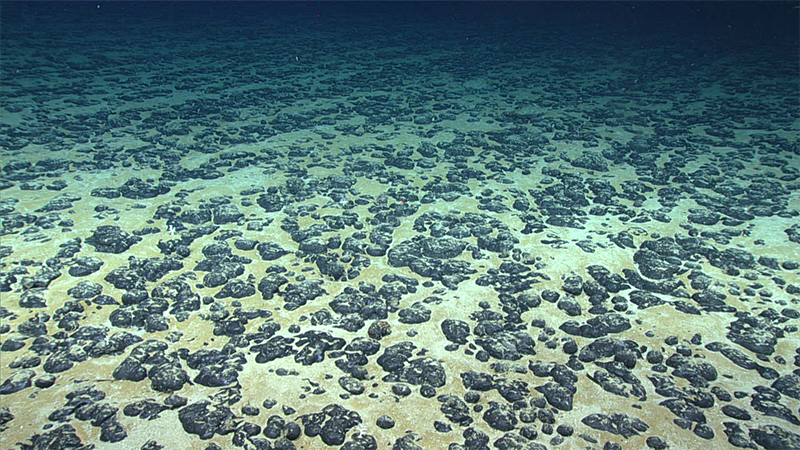The debate over deep-sea mining has focused almost entirely on environmental impacts: how marvelous communities of life, little-known and unlike any others on Earth, would be affected by the industrialized extraction of seabed minerals. Not much attention is paid to the economics. It’s taken for granted that, whatever the ecological harms may be, the business case is sound.
But what if that’s not true? Some opponents of deep-sea mining now argue that it wouldn’t just be ecologically catastrophic, a testament to how no part of Earth’s surface will be left unscarred by industrial appetites. They say it’s a bad investment, too.
“I don’t think it works technologically or financially,” says Victor Vescovo, a private equity investor and explorer who has dived to the deepest points of all five oceans. To Vescovo, practicality is the most compelling argument of all, and one that may sway the investors whose support is needed to make the industry a reality. “If you want to stop deep-sea mining,” he says, “you have to stop the funding.”
The deep ocean floor teems with life, just a fraction of which has been identified.
In a talk delivered last year, Vescovo gave a scathing critique of The Metals Company, the most prominent of nearly two dozen companies that have licenses to explore some 500,000 square miles of ocean floor. Their quarry is polymetallic nodules: egg-sized rocks containing cobalt, nickel, manganese, and copper. The Metals Company has completed pilot trials, retrieving more than 3,000 tons of nodules from a depth of 2.7 miles, and wants to begin commercial extraction.
The specter of commercial operations has galvanized opponents of deep-sea mining. Far from being barren, the deep ocean floor teems with life, just a fraction of which has been identified; deep-sea ecological dynamics are only hazily understood, but it’s clear that digging nodules from the seabed could be extremely destructive, and ecological recovery may take centuries if it happens at all. The United Nations Environment Programme says that deep-sea mining in its present forms cannot be considered sustainable.

That, however, was not the main subject of Vescovo’s presentation. Instead he talked about the extraordinary challenge of operating complex machinery in corrosive salt water at near-freezing temperatures and thousands of pounds of pressure per square inch. “It is an incredibly hostile environment,” he said. “It rips up anything mechanical or electrical almost like it has a will to do so.” This made a mockery, he said, of TMC’s projections: not the $13.1 billion value of metals targeted by their first project, but the $7.1 billion it would cost to retrieve them.
“Every major ocean-based capital expenditure project in oil and gas has invariably gone over budget,” said Vescovo. He mentioned the Gorgon gas project off the coast of western Australia, originally projected to cost $11 billion and now on the books for $54 billion. Operating costs—and the less-appreciated cost of finance, such as interest payments on loans—could easily tip ledgers into the red. “With realistic assumptions about what will actually happen,” he said, “I don’t know if the financial math works.”
Animating Vescovo’s talk was an urgency created by The Metals Company’s request for a commercial go-ahead from the International Seabed Authority, an intergovernmental body established in 1994 to regulate seabed development in international waters. A decision is expected at the next International Seabed Authority (ISA) meeting in July. Although commercial mining isn’t supposed to begin until as-yet-unfinished environmental regulations are finalized, investigations into how the ISA’s ostensibly-neutral leadership has promoted mining and given preferential treatment to The Metals Company have raised fears that the ISA might approve their request regardless.
If that happens and they can raise the necessary funds, The Metals Company could commence operations by 2024. If the ISA rejects their request, though, other companies will still be awaiting their own turn—and they may pose a graver concern than The Metals Company, which for all its aggressiveness has a share price that hovers around $1 and recently lost the confidence of shipping giant Maersk, which had been one of their main investors.
Deep-sea ecosystems could be destroyed for metals that will only be needed for a few more years.
Andy Whitmore, finance advocacy officer at Deep Sea Mining Campaign, says the economic questions apply to all deep-sea mining efforts, not just The Metals Company. “There are just so many unknown factors in terms of understanding what the environmental impacts will be,” Whitmore says, “but I think there are equally many things not understood in terms of what the economics will be.”
In addition to the practical challenges described by Vescovo, the issue of liability looms. Researchers have suggested that, by disrupting deep-sea food webs and microbial communities, mining could reduce the deep sea’s carbon sequestration capacity. It is also possible that those disruptions, along with sediment plumes created by mining, could have far-flung effects on commercial fisheries. Could companies or investors be held liable for that? It’s uncertain, says Bobbi-Jo Dobush, an environmental attorney and legal advisor at The Ocean Foundation, but very much a possibility—and that uncertainty should be factored into the economic equations of deep-sea mining. “How much is it going to cost just in terms of fighting lawsuits?” she says.
It may happen that companies no longer exist by the time their liabilities become evident, in which case payouts would come from compensation funds administered by the International Seabed Authority. That falls under the aegis of deep-sea mining’s financial rules—and just as the ISA has not completed environmental regulations, neither have financial regulations been settled.

According to the United Nations Convention on the Law of the Sea, seafloor development is “carried out for the benefit of mankind as a whole,” meaning that financial benefits must be shared with member nations. It’s a beautiful principle and also “a monumental undertaking which has no comparable precedent among any other industry,” wrote Andrew David Thaler, a deep-sea ecologist and former editor of the DSM Observer, an information resource for the deep-sea mining community.
What that will mean in practice—how revenues will be divided between mining companies and other nations, especially developing countries—remains undetermined and extremely contentious. “There is so much uncertainty in the regulatory sphere,” Dobush says. “Depending on how they figure out all these holes in the financial regime, it might be a lot more expensive” than expected.
The most fundamental uncertainty of all, though, may be the very necessity of deep-sea metals. At the moment they’re described as essential for making the batteries that will power the clean-energy revolution. “There are a lot of metals needed,” says Whitmore. “But do they need to come from the deep sea? There are arguments on that.”
Some researchers argue that existing terrestrial stocks of nickel and cobalt—the key battery elements contained in polymetallic nodules—are already sufficient to meet future needs. “Even if deep-sea mines get going, they will not be ‘critical’ in supply terms—especially given the substantial size of existing nickel- and cobalt-producing companies and countries,” says Gavin Mudd, an environmental engineer and mining sustainability expert at Australia’s Royal Melbourne Institute of Technology.
Mudd also notes that demand for cobalt and nickel may fall. Batteries are becoming easier to recycle; new battery chemistries that use cheap, ubiquitous elements like iron, sulfur, and sodium are becoming rapidly more sophisticated. Half of all new Teslas already contain nickel- and cobalt-free batteries, and if that trend continues the demand for—and price of—deep-sea metals would plummet. “Economics and costs are a huge risk,” says Mudd, and “are being underestimated at present.”
Vescovo also emphasizes that point. “The Metals Company wants to deploy $7 billion to $8 billion of hard cash capital to develop this infrastructure to mine the seafloor,” he says. “With $7 billion to $8 billion of capital, you could potentially replace the need for cobalt in batteries.” The likelihood of battery-industry change raises a troubling possibility: that deep-sea ecosystems could be destroyed for metals that will only be needed for a few more years.
Several years ago Vescovo led an expedition to identify the USS Johnston, a destroyer sunk in battle during World War II. It fell to the bottom of the Philippine Trench, coming to rest more than four miles beneath the ocean surface; though more than three-quarters of a century had passed, the areas through which it slid were still devoid of visible life. Those observations were later published in a study that, while not a direct observation of deep-sea mining, suggests just how long-lived—or long-dead—the consequences of mining disturbance may be. “It’s not going to be repaired for millennia,” Vescovo says.
“The economic timeline is very different from the timeline of the deep sea,” says Whitmore. “That’s the problem we’re dealing with.” ![]()
Lead image: Tasnuva Elahi; from images by keren-seg, Sorn340 Studio Images, Foto-Ruhrgebiet and Black_Kira / Shutterstock































